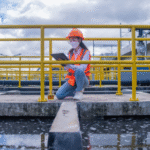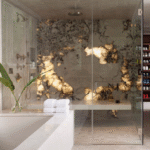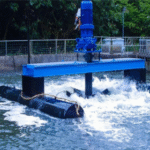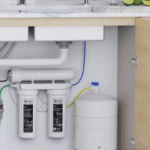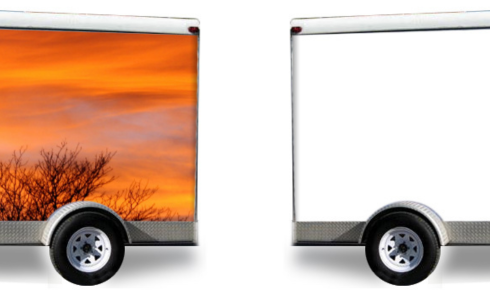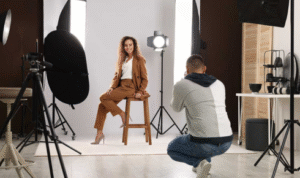Ever been stuck in traffic behind a plain white trailer and thought, “What a missed opportunity”? Now picture that same trailer transformed into a moving canvas — bold colors, sharp graphics, and a design that makes you remember the brand long after it’s gone. That’s the magic of a trailer wrap — a marketing tool that’s as functional as it is creative.
For years, businesses have been paying hefty amounts for billboards, TV ads, or online campaigns that vanish as soon as the budget dries up. But a trailer on the road? That’s a 24/7 advertisement, traveling across cities and highways, catching real human eyes every mile of the way. And unlike a static ad, it moves — meaning your brand reaches people where they least expect it: during commutes, errands, or even road trips.
The Real Impact of Visual Movement
There’s something fascinating about how motion captures attention. A well-designed trailer wrap doesn’t just show your logo; it communicates who you are. Whether it’s a bold color palette that screams confidence or a minimalist layout that whispers sophistication, the wrap becomes your silent salesman.
People often underestimate how much first impressions matter on the road. A clean, striking trailer design tells potential customers you care about quality, presentation, and professionalism. On the flip side, a faded or cluttered design can do the exact opposite. So yes — the way your trailer looks says more about your business than you might realize.
Why Wraps for Trailers Are a Marketing Goldmine
Think of your trailer as a moving billboard that you don’t have to pay rent for. With wraps for trailers, your investment goes far beyond a single event or short campaign. Once installed, it can last for years, silently promoting your brand every time it hits the road.
It’s not just about marketing, though. A wrap also protects your trailer’s original paint from harsh weather, UV rays, and minor scratches. That means it’s not only advertising — it’s asset protection, too. In a sense, it’s like giving your vehicle both a facelift and a shield at the same time.
And the best part? It’s versatile. Whether you run a local bakery, a construction company, a pet grooming service, or a tech startup, there’s a design language that can fit your brand’s personality perfectly. Modern printing technology has made high-resolution, full-color designs accessible even for small businesses, so you don’t have to settle for bland logos or stock templates anymore.
From Design to Execution — It’s All in the Details
The most effective trailer wraps aren’t the loudest ones; they’re the ones that tell a story in a glance. Every curve, corner, and surface should be treated with intention. A good designer knows how to use the trailer’s shape to their advantage — making graphics flow naturally across the panels rather than forcing them to fit.
A common mistake is trying to cram too much information into the space. While it’s tempting to list every service, slogan, and phone number, less often speaks louder. The human brain processes visuals faster than text, so the emphasis should always be on a design that catches the eye first, then guides it naturally to your brand name or message.
If your trailer passes someone at 50 miles per hour, they have about three seconds to absorb what you’re saying. That’s not much time. So focus on bold contrast, readable fonts, and a clear call to action. The goal is not to explain everything — it’s to make people curious enough to look you up later.
The Future of Trailer Graphics Wraps
Design trends evolve, and so do the materials used in modern trailer graphics wrap installations. Today’s wraps are printed using UV-resistant inks, laminated for durability, and tailored to the exact dimensions of each vehicle. They can withstand rain, sunlight, and temperature changes — all while maintaining that crisp, new look for years.
Moreover, digital design tools now allow for real-time 3D previews, meaning you can see exactly how your wrap will appear before it’s printed. This ensures no surprises when the final product hits the road. Many companies even offer customizable packages — you can start small with partial wraps or go all out with full-body designs that turn heads from every direction.
The future of wraps also includes interactive elements — QR codes that lead to videos, social links, or even augmented reality experiences. Imagine someone scanning your trailer and instantly seeing your product demo pop up on their phone. That’s next-level marketing.
How to Choose the Right Wrap Partner
Not all wrapping companies are created equal. It’s crucial to pick one with real experience, not just in printing but in design, fitting, and aftercare. A proper installation ensures the wrap adheres smoothly without air bubbles or wrinkles — details that make a huge difference in how professional the final result looks.
Ask to see previous projects, check customer reviews, and don’t shy away from discussing materials and warranties. A good wrap should be more than just pretty — it should last. You’re not just buying an advertisement; you’re making an investment in your brand’s visibility.
The Final Mile
There’s something incredibly satisfying about driving down the highway and spotting your own trailer looking sharp, vibrant, and unmistakably “you.” It’s more than advertising — it’s identity on wheels. A good wrap blends creativity, precision, and purpose in a way few other marketing methods can match.
So if your trailer still blends into the crowd, maybe it’s time to change that. Turn that blank canvas into something bold, something that travels your story wherever the road leads. Because at the end of the day, a great wrap doesn’t just move your trailer — it moves your brand.




